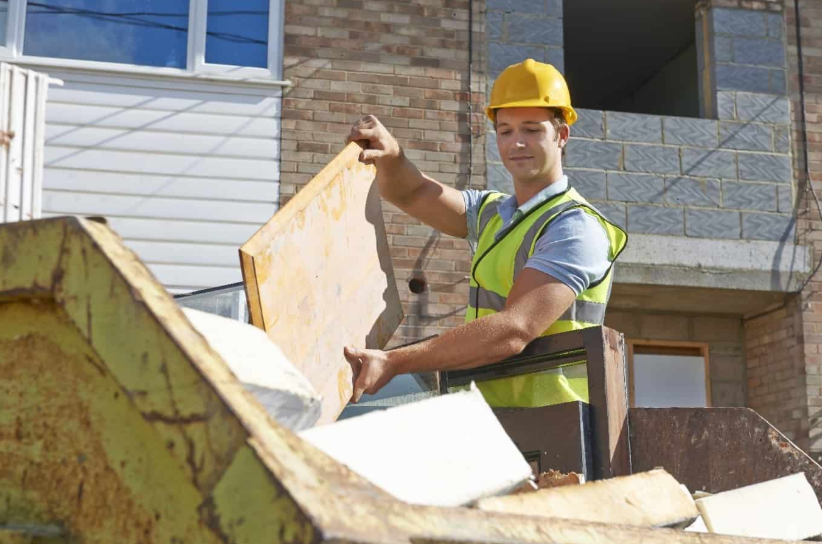
Construction Debris Disposal Best Practices for Efficient Site Management
Construction debris disposal involves the proper collection, transportation, and removal of waste materials generated from construction, renovation, or demolition sites. Effective disposal is crucial not only to keep job sites safe and organized but also to comply with local regulations and reduce environmental impact. Proper management of construction debris ensures hazards like asbestos or lead paint are handled safely and recyclable materials are diverted from landfills whenever possible.
Construction waste varies widely, including wood scraps, concrete, metals, drywall, and insulation. Each material may require different handling and disposal methods, making it important to understand how to separate and process waste correctly. Professionals often recommend using specialized services to manage large volumes of debris efficiently while maintaining environmental responsibility.
By focusing on eco-friendly disposal and recycling practices, construction projects can minimize pollution and promote sustainability. Responsible debris removal supports healthier ecosystems and helps projects meet safety and environmental standards without delays or legal complications.
Best Practices for Construction Debris Disposal
Effective construction debris disposal involves careful material handling, proper disposal techniques for various materials, and selecting appropriate disposal options based on project needs. These components help reduce waste, increase recycling rates, and ensure compliance with environmental regulations.
Sorting and Separating Materials
Separating debris by type is essential for efficient disposal and recycling. Common categories include concrete, wood, metal, drywall, and hazardous materials. Designating distinct onsite bins for each type simplifies handling and prevents contamination.
Proper segregation improves recycling outcomes and cuts landfill costs. It also supports regulatory compliance, especially for hazardous waste, which must be stored and labeled separately. Workers should be trained on sorting protocols to maintain consistency throughout the project.
Visual guides and signage near disposal areas reinforce sorting rules. Periodic audits verify that materials are correctly separated before removal, reducing errors and improving sustainability.
Disposal Methods for Concrete, Wood, and Metal
Concrete debris can often be crushed and reused as aggregate for new construction, reducing the need for virgin materials. If recycling is not feasible, concrete should be sent to designated facilities for proper disposal.
Wood waste varies in treatment. Untreated wood can be chipped for mulch or biomass fuel. Treated wood must be handled carefully to avoid releasing chemicals and generally requires specialized disposal.
Metal debris, like steel and aluminum, is highly recyclable. Metals should be cleaned of contaminants and transported to scrap yards or recycling centers. Recycling metals reduces energy consumption and the environmental impact of new metal production.
On-Site and Off-Site Disposal Solutions
On-site disposal involves temporary storage of waste in clearly marked containers or dumpsters. This keeps the construction site organized and safe, reducing the risk of accidents and contamination.
Off-site disposal is required for materials unsuitable for onsite processing or those needing treatment, such as hazardous waste. Partnering with certified waste management companies ensures materials are handled legally and environmentally responsibly.
Combining on-site sorting with off-site recycling and landfill diversion maximizes resource recovery and lowers disposal costs. Proper documentation of waste streams supports regulatory reporting and future project planning.
See also: Managed IT Service Provider Near Me Reliable Solutions for Local Businesses
Legal and Environmental Considerations
Construction debris disposal involves specific legal requirements and environmental responsibilities. Proper management reduces legal risks and limits ecological damage. It requires attention to regulations, environmental protection methods, and necessary permits.
Complying With Local Regulations
Construction companies must adhere to local, state, and federal regulations regarding debris disposal. These laws govern how waste is sorted, transported, and processed. Failure to comply can result in fines, project delays, or legal action.
Many jurisdictions mandate the diversion of a significant percentage of debris from landfills through recycling or reuse. For example, some areas require at least 65% of construction waste to be recycled or salvaged.
Documentation and tracking of waste disposal practices are often required to prove compliance. Companies should stay updated on relevant laws and consult with environmental agencies to avoid violations.
Minimizing Environmental Impact
Proper disposal prevents contamination of soil, water, and air. Construction debris often contains hazardous materials like asbestos or lead, which need special handling to mitigate environmental harm.
Recycling materials such as metals, drywall, and concrete reduces resource extraction and landfill use. Salvaging reusable items also conserves natural resources and lowers project costs.
Best practices include segregating waste at the source and using certified disposal or recycling facilities. This approach helps reduce pollution, conserve energy, and protect surrounding ecosystems during and after construction.
Permitting and Documentation
Environmental permits are often required before starting construction involving debris removal. Permits ensure that air quality, water use, and waste management meet regulatory standards.
Securing permits involves submitting detailed waste management plans outlining disposal methods and recycling strategies. Failure to obtain proper permits can delay projects and incur penalties.
Maintaining accurate records of waste disposal and recycling efforts is essential. These documents demonstrate compliance and assist in audits or inspections by authorities. Proper paperwork also supports sustainability reporting and corporate responsibility initiatives.



